Craft, discerning design, quality, and longevity are values that we in the AGEIST cohort have built up over a lifetime. As we came to know Gregg Buchbinder and the Emeco chair, we knew his story was one that we had to bring to the fore. His running of what could have been a lost American jewel of manufacturing came out of the tragedy of losing his father, and very nearly his own life.
The theme of resilience echoes through his story. From making chairs that are quite literally indestructible — there has never been a case in history of the original Navy chair breaking — to a small pride-filled American factory that would not give up, to Gregg himself with his daily self-care rituals, what could have been a story of tragic loss has become one of dynamic evolution and progress. What could have been a forever loss of craftsmanship, of going the outsourcing route, of economic ruin for the local economy, has instead become a highly environmentally conscious company for the best of the best to come to make chairs. If we imagine the Venn diagram of us living longer, the heightened awareness of the consequences of our consumer decisions, and when “buy it once and buy it right” are now top of mind, you will see Gregg Buchbinder at the center.
“Growing up, our home was filled with a lot of cool reject furniture waiting to be fixed, or recently put back together”
Your father was also in the furniture-building business. Is it true he knew Charles Eames?
Yes! My dad was an engineer who mostly worked on the structural integrity of furniture for Herman Miller. After trade shows, they used to give him some of the rejects (now called prototypes). Growing up, our home was filled with a lot of cool reject furniture waiting to be fixed, or recently put back together. I think this really shaped how I thought of the importance of being able to fix something rather than buy new.
So did you grow up around design?
My mom loved all kinds of arts, crafts, and design. She always had some kind of creative project going on all over the place. Our house was definitely unconventional for the time — aluminum boxes smashed on the walls, and everything white. Between the two parents, you kind of get brainwashed, in the same ways I have brainwashed my kids.
Tell us about your initial impression of Emeco. Why did your father buy it?
When I first visited the Emeco factory, I was totally amazed how much work went into a Navy chair. Because of my father’s work in the furniture industry, he knew that the Navy chair was historically significant and too important to perish. At the same time, it was very empty; not that many people working, and not that much output. The same machines that had been used in the 1940s were still there and collecting dust. We still use the same machines, but a bit more than the first time I visited.
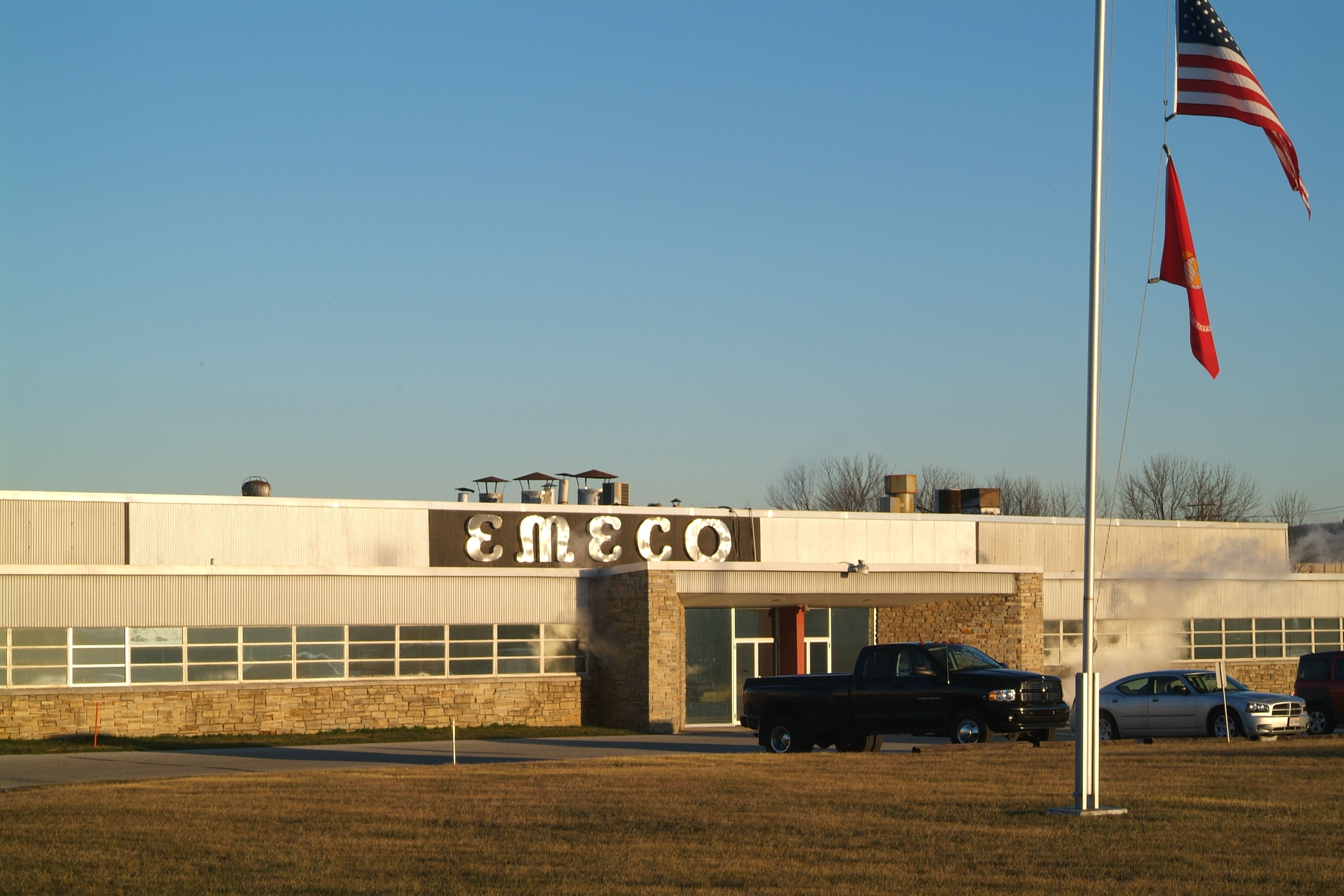
You and your father were in a tragic accident that resulted in you losing him. How has that shaped you?
No matter where I traveled in the world, I always tried to make it home for Sunday bike rides with my dad. We rode from his home in Huntington Beach down Pacific Coast Highway to Laguna Beach for a cappuccino. One early Sunday morning, a driver going 65 mph swerved into the bike lane and took us out. My father did not survive and I was taken away by ambulance with a broken neck. My world was turned upside down. It took me a long time to feel joy again. A few things changed after that — I had always been a workaholic, and it physically forced me to take a step back and organize my priorities. Not that I am not a workaholic now, but I definitely have more perspective on what matters and how important it is to take care of your physical body. It also reinforced my love for Emeco — when faced with the question “Is there anything I would rather be working on?” to be able to say no is a luxury.
When was the ah-ha moment that you understood that Emeco could be not just a utilitarian manufacturer but a design company?
The ah-ha moment happened in Milan, Italy during the Salone del Mobile, the largest and most important furniture show in the world. Philippe Starck had the idea of renting a mobile billboard truck with a huge photo of our new Emeco polished Hudson chair, followed by these words: “HERITAGE AGAINST RECYCLING.” This meant when you make something so well, it never has to be recycled. The plan was for this billboard truck to park in front of all the best parties. Starck took me to the Kartell party at the Kartell factory. It was an amazing party with the who’s who of the design and fashion world in attendance. Our billboard truck was parked right at the main entrance where you could not miss it. For me, it was totally embarrassing, but at the same time thrilling to know Emeco had arrived. It became more and more evident that the design world already knew who we were and we were only starting to realize it.
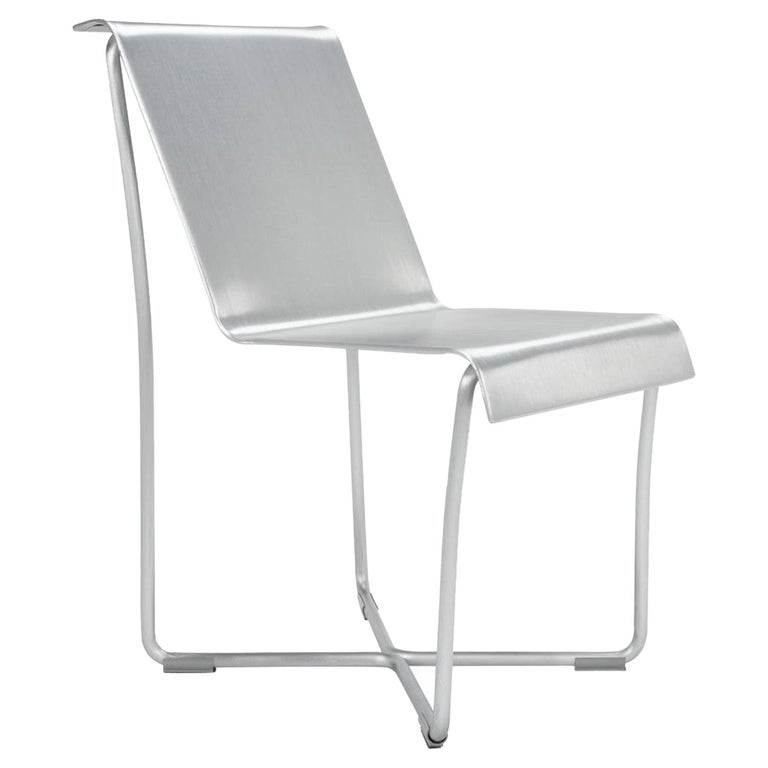
A Chair Crafted for the Navy in 77 Steps
The original chair is an amazing product, virtually indestructible. What was it made for? Is it machine-made or handmade?
The Navy chair was a purpose-built chair made for Navy ships. The Navy had specific requirements: rustproof for the ocean’s salt air, fireproof for shipboard safety, nonmagnetic to not interfere with the instrumentation, lightweight to keep the ships from being top-heavy, and super strong so the big burly sailors could not destroy them. In the 77-step process hand craftsmanship is in each step. Two areas where our craftsmanship are most pronounced include tig welding which takes a skilled craftsman to coordinate both hands and one foot all at the same time. They hold the torch with one hand, the filler rod with the other hand, and use their foot to control the ‘heat’ of the torch. After a few years, a talented welder can delicately lay down what looks like a stack of dimes. The other craft which is very pronounced is the hand-brushed finish. Each chair is slightly different depending upon the pressure exerted and the wear of the brush. Each of the 77 steps that the chair goes through improves upon each other to increase strength and durability. We would not have the Navy chair if we skipped even one.
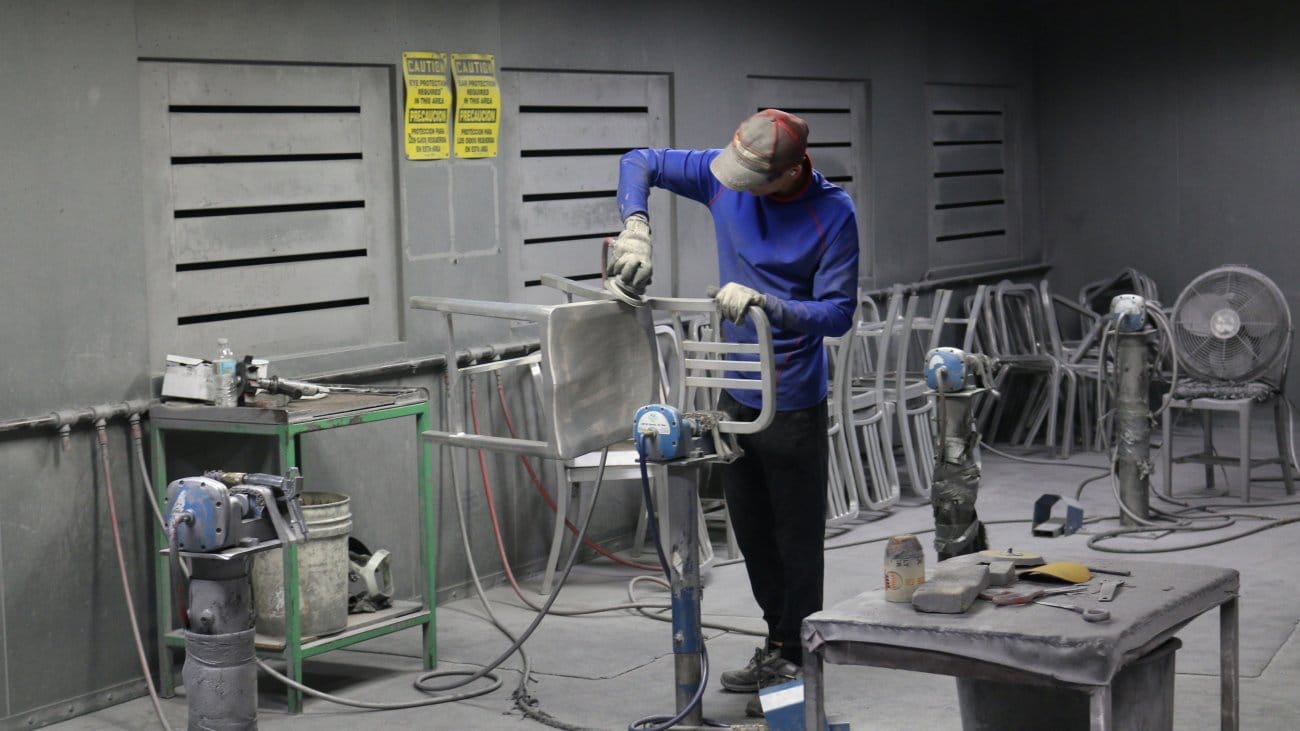
American Made
What keeps you manufacturing in Hanover, PA when there must be a constant solicitation to move to Asia?
While many US companies have decided to move their factories to Asia to reduce costs, we believe strongly manufacturing in the US is the right thing to do for many reasons: (1) Quality. All of the many steps in our process are done under one roof. This allows us to watch every detail closely to ensure the best workmanship possible. (2) Craftsmanship. It takes years for some of our craftsmen to hone their skills. Our apprentices are cross trained in every area of the process. We believe it’s important to keep our know-how and craft in America. (3) People. Our people make the products and make the company. We provide a safe place to work, provide health care, and pay good wages to make a career. (4) Suppliers. At Emeco we try as much as possible to support our local community and businesses. We are loyal to them and they are always right there when we need them. (5) Environment. Because we use local suppliers we don’t have to ship halfway around the world. And by making high-quality products they will last decades longer.
Collaborating With Designers
You work with some of the very biggest names in design. What attracts them to Emeco?
The designers tend to find us at the same time we find them. They have happened accidentally in places like elevators, or by invitation to work with them on a chair for a museum or hotel they are doing. For exceptionally great collaborations you need a high level of respect, trust, and confidence in each other. We especially love working with some of these people because they educate us with their astounding experience and knowledge. These creatives work directly with our team of engineers, craftsmen, material scientists, and often push us to do things we’ve never done before. At the same time, we are makers, we know the material, we know the process, and our team of experts knows how to attain extraordinarily well-made chairs that often end up in museums. We also work pretty unconventionally, and with less bureaucracy, than most companies — to me, this probably keeps things even more fun!
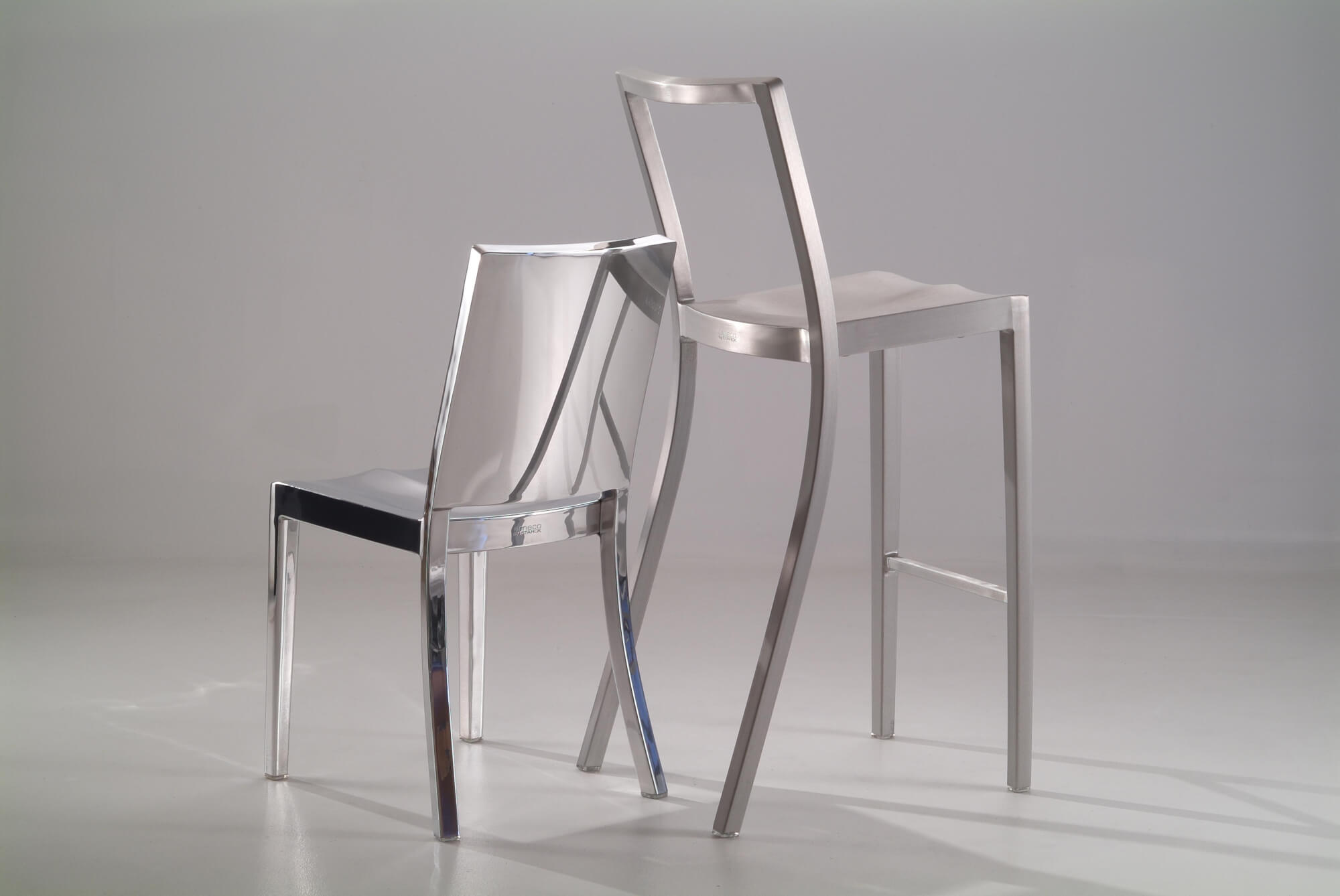
What is it like working with people like Frank Gehry?
I felt honored to work with a creative brain like Frank Gehry. Here is a guy designing the most amazing buildings in the world and somehow he squeezes in time to do a chair. On one project, Tuyomyo, my daughter and I would meet with Frank on Saturdays to have lunch with him in his office. He always dressed very casually in a t-shirt and jeans and made us feel welcomed. With each collaboration friendships are made; Frank invited us to join him sailing, a sport that we both love and felt very full circle for a company born out of oceanic adventures.
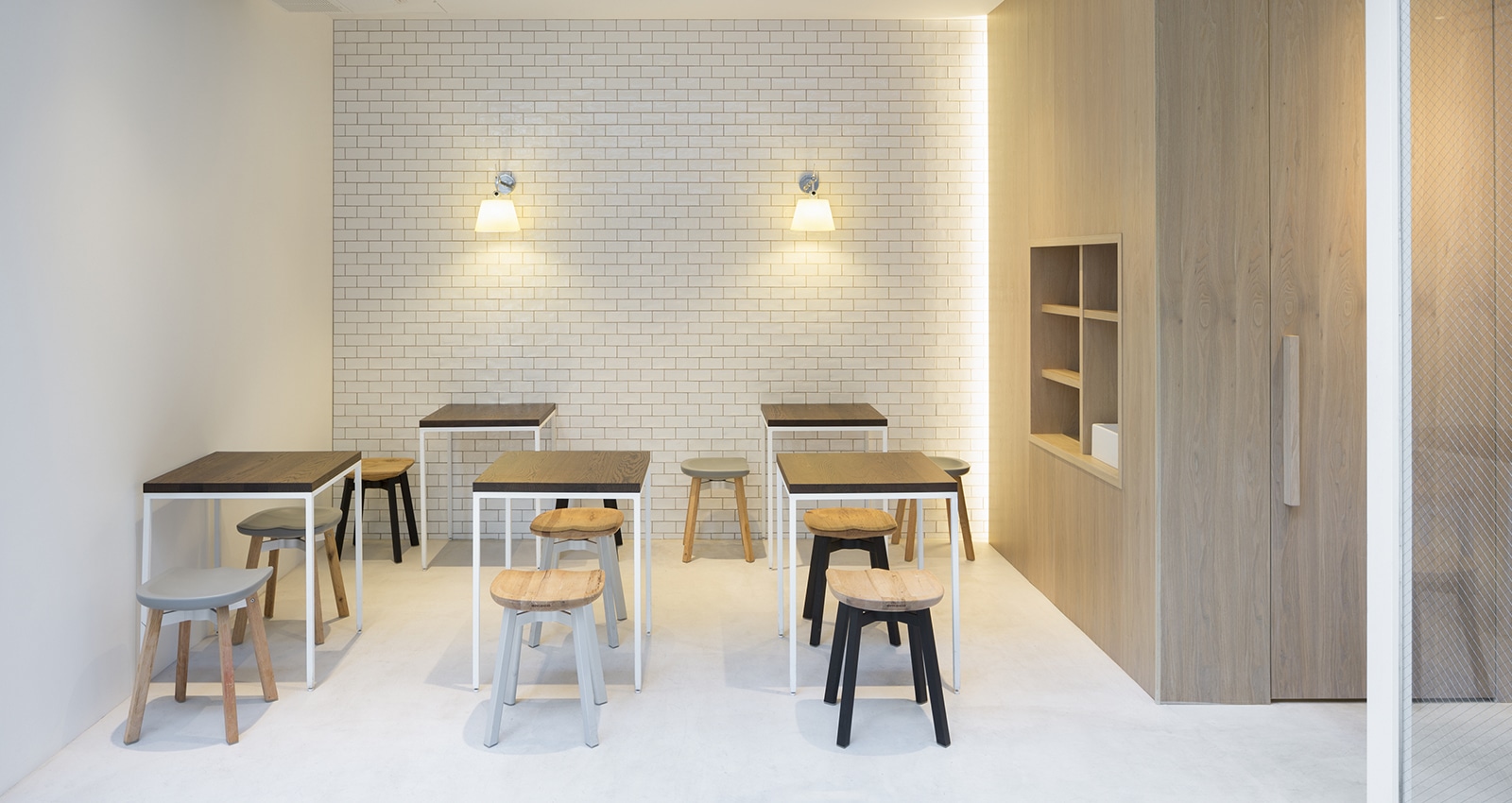
I love the new Su stool. When did that launch?
Su was launched in 2014. It was a great project we did with the firm Nendo; Oki Sato is a partner and does the design. Oki came to the Emeco factory and wanted to see all the different waste materials our product development team was experimenting with. After showing him cork, wood from old barns, plastic from milk cartons, and eco concrete, Oki said, “Why not do them all.”
“Naoto wanted to design a stool that would feel like it had always been a part of the Emeco family since forever, like a little brother or sister”
The new stool we just launched in February is Za. The designer was Naoto Fukasawa. Naoto wanted to design a stool that would feel like it had always been a part of the Emeco family since forever, like a little brother or sister. His inspiration was our original Navy chair. He used all the same DNA to create a stool that would be multifunctional, comfortable, strong, and also bring joy. People value objects that are well made. Things people value, they take care of and well-made objects tend to have long lives. The longer people keep and live with these objects the more opportunity to be associated with great memories. Naoto’s feeling is Za will be an object which brings joy, that you want as a family keepsake and something you value to pass on for generations.
This past year has been a challenge for everyone. How did it affect Emeco?
The state of Pennsylvania required all factories to shut down for three months; that was a difficult time. I’ve always believed in hiring the best people no matter where they lived. Our team at Emeco learned long ago how to work together from a distance. Remote working was nothing new for us. When we opened back up, we were really lucky that the craftsmen wanted to come back — it is super hard to find people of that caliber. It also gave us the chance to tackle a never-ending backlog of things to do. It was not easy, but we learned a lot.
How was Covid and the isolation for you personally? How did you stay connected to the people in your life?
We managed to avoid exposure to Covid. We stayed at home, cooked at home, and had a few close quarantine friends over for dinner and games. We also did Zooms with our kids where we played games, Zoom cooking classes with friends, and kept up running and being safely outdoors where we could.
“We will continue to push forward by making a positive impact through our work with waste materials, processes, and circular design thinking”
Sustainability is baked into the Emeco DNA with the initial recycled aluminum chairs. How are you pushing that forward now? The plastic upcycling, the sustainability report, and the use of sustainable materials.
We will continue to push forward by making a positive impact through our work with waste materials, processes, and circular design thinking. As awareness and importance grows around climate change, we will double down our efforts to measure our carbon footprint to continually improve how we make things, educate consumers to help them make informed choices, and inspire manufacturers everywhere to join us in this cause. Our big goal now is to start quantifying all of these variables and figuring out the biggest areas of improvement. We want to showcase our learnings to other like-minded companies in and out of the industry and learn from each other.
Are you still surfing?
I’m keeping my standards low and am happy to surf Friday mornings with my daughter and friends. It’s a therapeutic soul cleanse, getting out to watch the sun rise, the morning birds, and the occasional pod of dolphins. I’d go crazy if I couldn’t sneak off into the ocean every few days, but I’m also not under the illusion that I’m going to catch the wave of my life right now or drastically improve my skills.
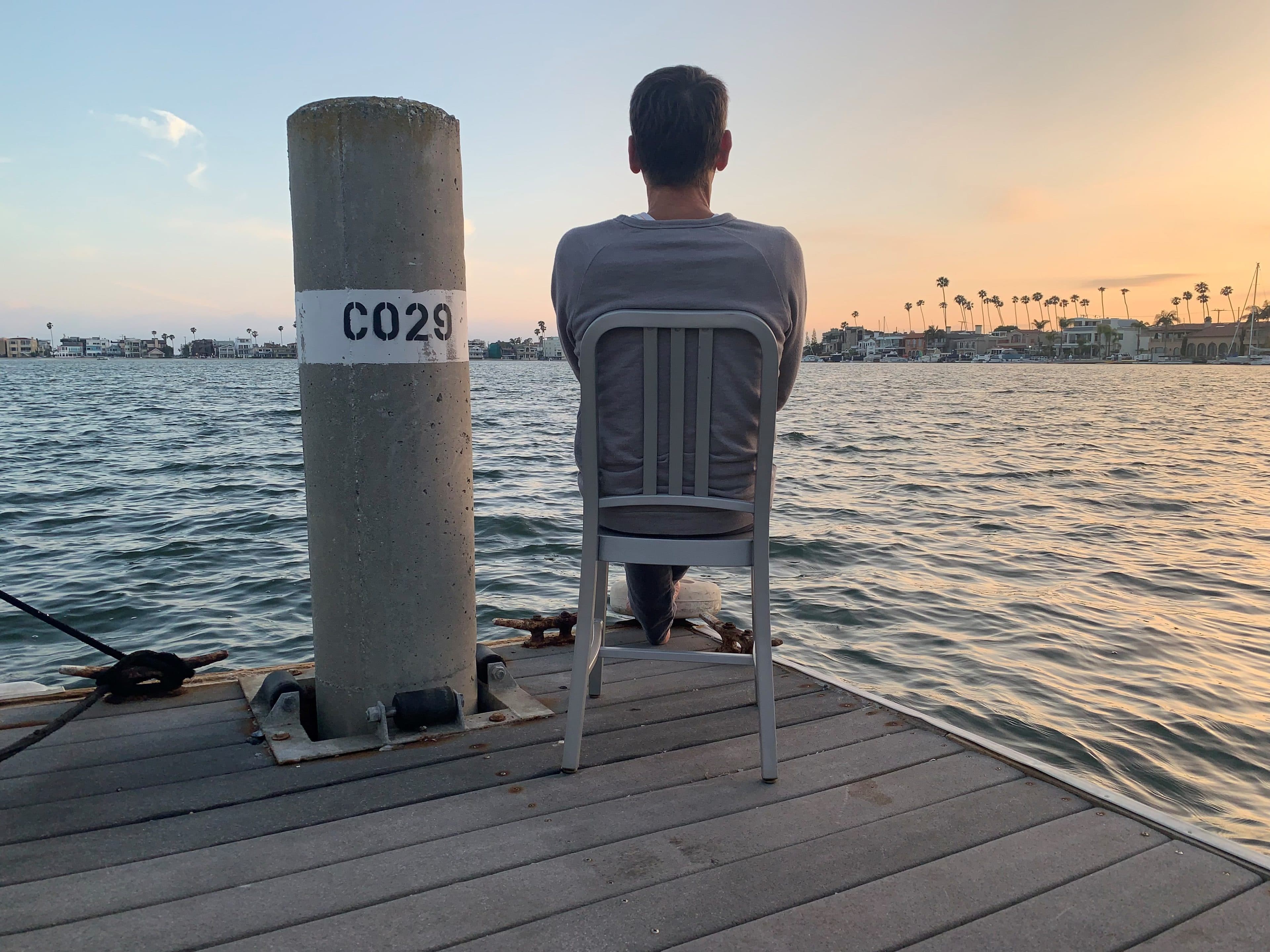
What are you listening to these days?
Jazz from my local radio station KJAZZ 88.1 in Long Beach, and recently Khruangbin.
We have heard you have a pretty rigorous fitness routine, even when you are traveling. What does that look like these days?
Ah, every morning I get up and do some kind of workout, a run or circuit workout; it’s a great way to start the day. My playground is the ocean for surfing, kayaking, prone paddleboarding, and swimming.
https://www.emeco.net/
The ideas expressed here are solely the opinions of the author and are not researched or verified by AGEIST LLC, or anyone associated with AGEIST LLC. This material should not be construed as medical advice or recommendation, it is for informational use only. We encourage all readers to discuss with your qualified practitioners the relevance of the application of any of these ideas to your life. The recommendations contained herein are not intended to diagnose, treat, cure or prevent any disease. You should always consult your physician or other qualified health provider before starting any new treatment or stopping any treatment that has been prescribed for you by your physician or other qualified health provider. Please call your doctor or 911 immediately if you think you may have a medical or psychiatric emergency.
AUTHOR

We will never sell or give your email to others. Get special info on Diet, Exercise, Sleep and Longevity.
